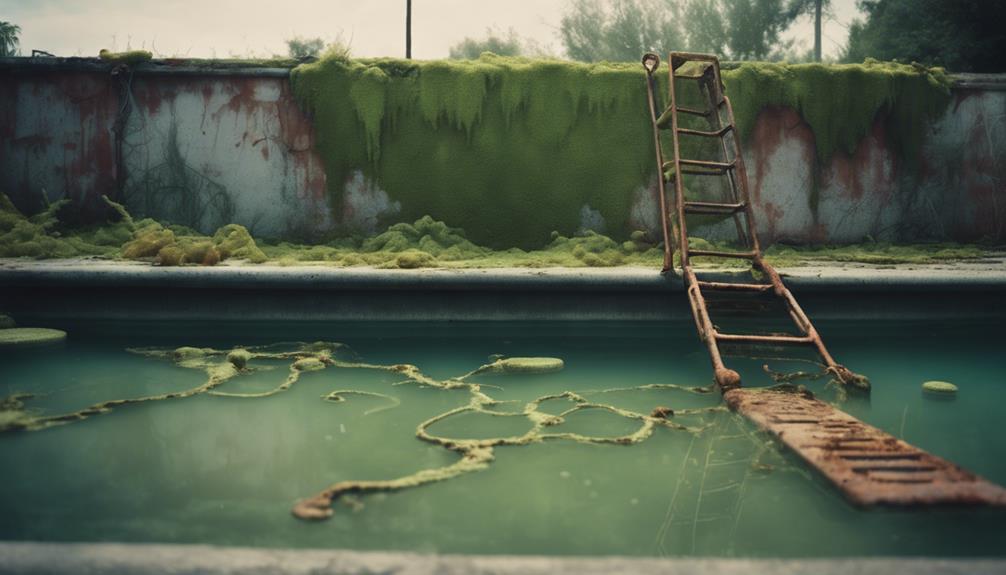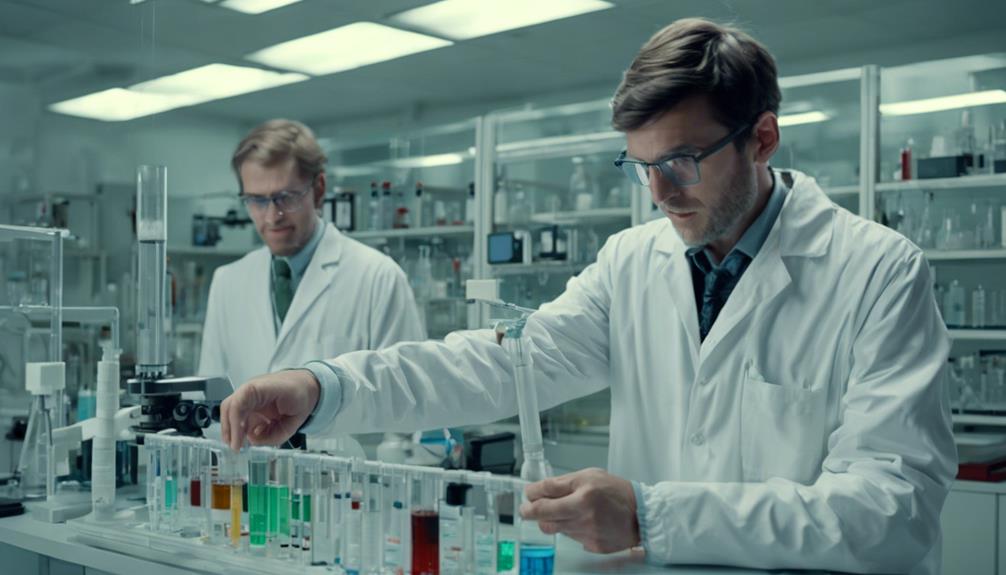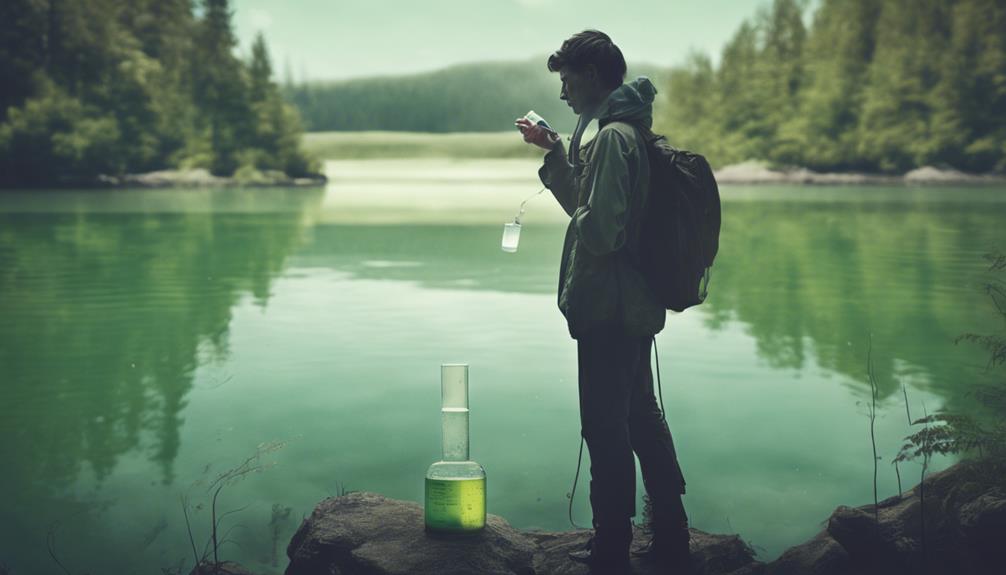You test water quality so frequently because even a single contaminated water supply event can lead to up to 1.1 million cases of waterborne illnesses, as estimated by the CDC. Contaminants can seep into the water supply at any time, making frequent testing necessary. Tap water may contain toxic chemical contaminants, posing serious health risks, especially for vulnerable populations like the elderly and young children. Ignoring water quality can lead to significant financial consequences, including hospital bills and lost productivity. By testing regularly, you'll stay ahead of potential issues and guarantee safe and clean water – and that's just the beginning of what you need to know.
Table of Contents
Key Takeaways
- Contaminants can seep into the water supply at any time, making frequent testing necessary to ensure drinking water safety and purity.
- Regular testing detects changes in water quality, enabling timely intervention to prevent health risks and waterborne illnesses.
- Failing to test water quality regularly can lead to significant financial consequences, including hospital bills and lost productivity.
- Testing water quality at least once a year, or more often if changes in taste, odor, or appearance occur, helps identify potential issues before they become major problems.
- Every dollar spent on water testing and treatment returns $12 in healthcare savings, according to the CDC, making regular testing a cost-effective investment.
Water Quality Affects Everything
As you turn on the tap, you may not realize that the water flowing out affects virtually every aspect of your life, from your health and the environment to the economy and beyond.
The water you drink can impact your health, as contaminants can cause a range of health problems, from mild gastrointestinal issues to life-threatening diseases. Vulnerable populations like the elderly and young children are especially susceptible to waterborne illnesses.
But water quality doesn't just affect your health; it also has significant environmental and economic implications. Contaminated water can harm aquatic ecosystems, contaminate soil, and affect wildlife habitats, leading to long-term ecological damage.
Additionally, water pollution can lead to costly infrastructure repairs, decreased property values, and impacts on industries like agriculture and tourism. The quality of water used in agriculture affects crop yields, food safety, and the overall economy.
In short, the water flowing from your tap has far-reaching consequences that extend beyond your kitchen sink.
Hidden Dangers in Tap Water
When you turn on the faucet, you expect clean drinking water to flow out.
However, you might be unaware of the hidden dangers lurking in your tap water, which can pose serious health risks.
You'll want to know about the toxic chemical contaminants and bacterial growth risks that can be present in your water supply.
Toxic Chemical Contaminants
You may be unaware that your tap water contains a multitude of toxic chemical contaminants, which can have devastating effects on your health and well-being.
These harmful contaminants can seep into your water supply through various means, such as agricultural runoff, industrial waste, and even corroding pipes.
The consequences of water contamination can be severe, ranging from mild skin irritation to life-threatening diseases.
Just a few examples of toxic chemical contaminants that may be lurking in your tap water include:
Pesticides: residues from agricultural chemicals that can cause neurological damage and cancer.
Heavy metals: like lead and mercury, which can harm brain development and kidney function.
Volatile Organic Compounds (VOCs): chemicals from industrial processes that can increase cancer risk.
Pharmaceuticals: residues from medications that can affect hormone levels and fertility.
It's essential to test your water quality regularly to verify these toxic chemical contaminants are within safe limits.
Bacterial Growth Risks
Your tap water may be harboring another hidden danger: bacterial growth, which can occur when water distribution systems are compromised, allowing bacteria like Legionella, Salmonella, and E. coli to thrive and pose serious health risks to consumers.
You're especially vulnerable if you're elderly, a young child, or have a weakened immune system.
The Centers for Disease Control and Prevention (CDC) estimates that up to 1.1 million cases of waterborne illnesses occur in the United States each year, with bacterial contaminants being a leading cause.
Failing to test water quality regularly can lead to the proliferation of bacterial growth, putting thousands of people at risk of waterborne diseases.
It's vital to safeguard your tap water is safe by conducting frequent water testing.
The Environmental Protection Agency (EPA) recommends testing for bacterial contaminants, such as total coliform, at least 100 times per month.
By doing so, you can prevent contamination and verify your water is safe to drink.
Don't wait until it's too late – prioritize water testing to protect your health and well-being.
Cost of Ignoring Water Quality

Ignoring water quality can have devastating financial consequences, potentially leading to significant hospital bills, medication costs, and lost productivity. By neglecting to test your water quality, you're putting yourself and your loved ones at risk of waterborne diseases, which can lead to hefty medical expenses.
Some potential costs you could face:
$1 million to $10 million: The average cost of a waterborne disease outbreak.
$100 to $500: The cost of a professional water test, a small price to pay for peace of mind.
$10,000 to $50,000 or more: The average cost of remediating a contaminated well.
$12 in healthcare savings: The return on investment for every dollar spent on water testing and treatment, according to the CDC.
Don't fall into the trap of thinking DIY water testing kits are a cost-effective solution. They often produce inaccurate results, leading to further costs and potential health risks.
Invest in regular professional water testing to safeguard water safety and avoid long-term health and financial costs.
Frequency of Water Quality Testing
Regular water quality testing is essential to safeguard the safety and purity of your drinking water, as contaminants can seep into the water supply at any time, making frequent testing a necessary precaution.
You can't assume that your water is safe just because it looks and tastes fine. In reality, many contaminants are odorless, tasteless, and invisible, making them difficult to detect without proper testing.
Testing is imperative to identify potential issues before they become major problems.
You should test your water quality regularly to confirm that it meets the safety standards set by the Environmental Protection Agency (EPA).
The frequency of testing depends on various factors, including the source of your water, the age of your plumbing, and the local environmental conditions.
As a general rule, it's recommended to test your water quality at least once a year, but more often if you notice any changes in the taste, odor, or appearance of your water.
DIY Testing Vs Professional Testing

When it comes to testing water quality, you face a critical decision: whether to rely on DIY testing kits or hire a professional to do the job. As a responsible homeowner, you want to verify your water is safe and clean.
DIY testing kits can be a cost-effective option, providing instant results for basic parameters like pH, hardness, and chlorine levels. However, they may not detect more complex contaminants like heavy metals, pesticides, or bacteria.
Professional testing provides more accurate results, as trained technicians use advanced equipment and follow standardized protocols.
Professional testing also offers an in-depth analysis, as professionals can test for a broader range of contaminants, including those that may not be detectable with DIY kits.
In addition to accuracy and in-depth analysis, professionals can help you understand the test results and recommend necessary actions, such as installing a water filter or treating your water supply.
Furthermore, professional testing labs are often certified by government agencies, guaranteeing the results meet regulatory standards.
While DIY testing kits can be a good starting point, they may not provide the in-depth analysis you need to verify your water is truly safe.
Interpreting Test Results Matters
You've taken the essential step of testing your water quality, but now a key understanding is necessary to accurately interpret the test results and grasp the true state of your water. This is where many homeowners falter, as they're unsure how to decipher the complex data. However, interpreting test results is imperative to making certain your water is safe for consumption.
Here's a breakdown of what your test results might look like:
| Parameter | Safe Level | Your Result |
|---|---|---|
| pH | 6.5-8.5 | 7.2 |
| Total Dissolved Solids (TDS) | <500 mg/L | 350 mg/L |
| Chlorine | 0.2-4.0 mg/L | 1.5 mg/L |
As you can see, each parameter has a safe level, and your result is compared to that level. By analyzing these results, you can identify potential issues with your water quality. For instance, if your pH level is outside the safe range, it may affect the taste or odor of your water. Similarly, high TDS levels can indicate contamination. By understanding your test results, you can take corrective action to confirm your water is safe and clean.
Staying Safe With Regular Testing

By understanding your water test results, you're empowered to take proactive measures to maintain your water remains safe and clean, and that's where regular testing comes in.
Regular testing helps you identify contaminants before they cause significant health problems, allowing for swift detection of changes in water quality and enabling timely intervention to prevent health risks.
Verifies water treatment system effectiveness: Regular testing confirms your water treatment systems are working correctly, providing you with clean and safe drinking water.
Detects changes in water quality: Regular testing helps you identify trends and patterns in water quality, allowing you to take action before contaminants cause harm.
Informs treatment and filtration decisions: Accurate testing results inform water treatment and management decisions, promoting public trust and confidence in water safety.
Improves water quality: Regular testing enables targeted remediation, helping to improve water quality and reduce the risk of waterborne illnesses.
Frequently Asked Questions
How Often Should Water Quality Be Tested?
You should test water quality regularly, ideally through routine sampling, to account for seasonal variations and guarantee compliance with industry standards, which recommend frequencies ranging from daily to quarterly, depending on the water source and intended use.
Why Is Testing Water Quality so Important?
As you dip your glass into the tap, remember that testing water quality is essential for your health, the planet's well-being, and your wallet – ensuring safe drinking water prevents waterborne diseases, environmental pollution, and costly economic consequences.
Why Is It Necessary to Test the Drinking Water More Frequently After a Heavy Rain?
You're wise to wonder why frequent water testing is vital after heavy rain. It's because flood contamination, storm runoff, and rainwater overflow can introduce pollutants, making regular testing essential to guarantee your drinking water remains safe and clean.
How Accurate Are Water Tests?
You'll be surprised to know that some water tests can detect lead concentrations as low as 0.001 milligrams per liter! Laboratory standards guarantee accuracy, but test variability and human error can occur, affecting results.
Conclusion
You've made it to the end of this water quality journey!
By now, you know why frequent testing is essential.
The EPA estimates that 10-20% of private wells in the US contain unsafe levels of contaminants.
Regular testing can be the difference between health and hazard.
Stay vigilant, and your tap water will be safer for you and your loved ones.

